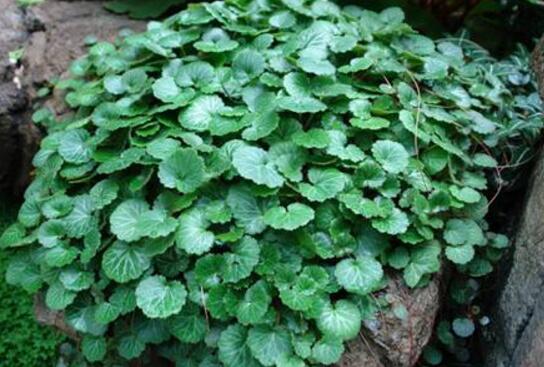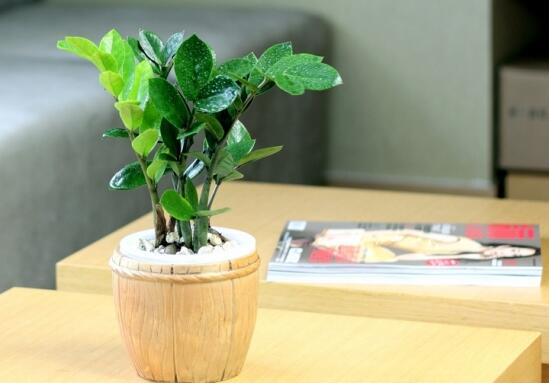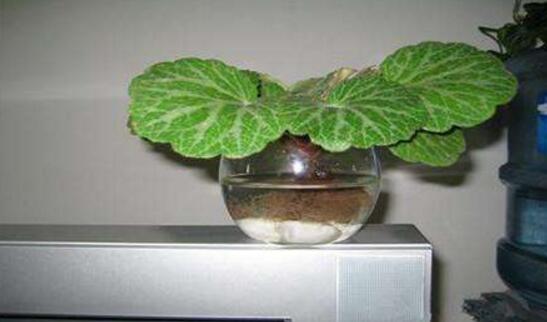How to raise Saxifraga, the cultivation methods and matters needing attention / cool environment of potted Saxifraga
As Saxifraga has many effects and functions, more and more people plan to raise it, but some people do not know how to raise Saxifraga, but they do not know its living habits, and so on. Today, the editor introduces the breeding methods and matters needing attention of Saxifraga potted. After reading it, you will know that raising Saxifraga is not that difficult.
How to raise Saxifraga

Saxifraga is a very adaptable plant, which first appeared in the shady and wet rock crevices under the forest at an altitude of 400-4000 meters. It is relatively cool and humid and has high cold tolerance, which must be known before understanding how Saxifraga is raised.
Culture methods and matters needing attention of potted Saxifraga
Saxifraga was originally a wild plant, and later developed into an ornamental plant that can be potted. Below, we understand the breeding methods and matters needing attention of potted Saxifraga from the aspects of soil, light, temperature, watering, fertilization and so on.
1. Soil selection
Saxifraga has a general requirement for soil, but if it is a potted plant, we should try to choose the soil with good drainage and air permeability, such as the sandy soil with more organic matter, and the soil under the dense and wet forest and on the cool and moist canopy wall.
Note: pay attention to disinfect the soil before potting, you can put the soil in the sun to dry, so as to avoid the emergence of diseases and insect pests.
2. Requirements of lighting
Saxifraga requires that it cannot be directed, but it needs a certain amount of light. If the light is not enough, the leaves will be dim, but too much light may cause the leaves to turn yellow, so you need to pay special attention in summer and winter.
Note: Saxifraga should be moved to a cool place in summer, shaded if it cannot be moved, and sunny in winter.
3. Temperature control
The most suitable temperature for Saxifraga growth is 15-25 degrees, but its cold tolerance is relatively high, and it can survive in an environment of 5-10 degrees, but try not to let it be lower than the low temperature for a long time.
Note: there are some varieties of Saxifraga that are not cold-tolerant, such as Saxifraga tricolor, which may die when it is below 15 degrees, so pay attention to what varieties you raise.
4. Watering frequently
In the cultivation methods and matters needing attention of potted Saxifraga, watering is very exquisite. Water should be watered once a day during the growing period in order to keep the soil moist; watering should be reduced after flowering.
Note: Saxifraga likes wet environment, if the soil is too dry, it is easy to make the leaves yellow and fall off, so be sure to water frequently, but remember to water too much at one time, do not let the basin appear stagnant water.
5. Fertilization management
Saxifraga does not have a high demand for fertilizer, but it should be fertilized every 20 days during the growing season and before flowering, and can be stopped in winter.
Note: fertilizer should be applied from the root, do not let fertilizer contact with the leaf, this may affect the plant growth of Saxifraga.
Conclusion: the climate environment of each place is different, so when raising Saxifraga, the breeding methods and matters needing attention of potted Saxifraga is a very important reference. Only by protecting it attentively can we ensure the healthy growth of Saxifraga. And play the maximum ornamental value.
Summary of cultivation and maintenance methods of potted Saxifraga
█ Flower Decoration > > Home Flower Decoration pattern Design case
█ flower appreciation > flowers blossom, indoor flower picture appreciation
█ Flower Culture > aromatic Flower Culture to create an aroma-smelling bedroom
Saxifraga, this kind of plant, should have been raised by many families, but it is not known to be Saxifraga. This is a very common potted plant, commonly known as Schima superba, which looks a bit like coins and resembles small sunflower leaves. This plant produces small reddish flowers in summer. The Tiger Prairie is always green in the remaining shady and wet places, so it is often planted on stone mountains and become part of the bonsai. The following will take you to understand the key points of cultivation and maintenance of Saxifraga.
How to cultivate Saxifraga in ☼ pot
Saxifraga belongs to a cool and humid environment, and the soil requires a fertile and humid environment, so it is best to cultivate in a dense and humid environment. Saxifraga is often propagated and cultivated. In Sichuan, it needs to be cultivated in summer. The plants with well-developed fibrous roots and strong growth are selected for cultivation. We need to pull up the seedlings from the stolons as seedlings. In the cultivation, we should choose the appropriate flowerpot, configure the soil, and then plant it shallowly on the surface and press the fibrous root in the soil. If wet humus soil is used, then we need to press and water the fibrous root.
☼ Saxifraga culture environment
1) Saxifraga likes relatively warm environment best, so the external temperature of potted plants should be between 15 ℃ and 25 ℃. Although Saxifraga likes warm environment, it is also hardy. When the temperature is 5 ℃, Saxifraga can still grow, but Saxifraga is not hardy. The temperature for overwintering is 15 ℃. If it is below this temperature, it is easy to cause death. Therefore, we must do a good job in keeping warm facilities for Saxifraga in winter.
2) Saxifraga prefers a humid environment, which needs to be kept moist during the growing season. It is best to spray water frequently in summer to increase the humidity in the air and the leaf surface, and to clean the container every time you change water.
3) Saxifraga is suitable for growing in semi-overcast environment, and it is difficult to survive in all direct sunlight, so in summer, if the light is too strong, we have to shade it and use brighter scattered light.
Summary of maintenance points of Saxifraga ☼
Saxifraga prefers a warmer, damp environment, is not tolerant to drought, and is afraid of direct light. The optimum temperature for growth is 18-22 ℃, and the room temperature is more than 5 ℃ in winter. Therefore, when raising Saxifraga, we should pay attention to the following points:
1) soil: Saxifraga requires soil to be aerated, permeable and fertile, which can be mixed with rotten leaf soil, garden soil and river sand.
2) display: Saxifraga likes the shady and wet environment and is afraid of dry wind. The leaves are easy to lose color at the scorched edge and are resistant to water and moisture in the dry environment. Therefore, potted Saxifraga can be cultivated in indoor places with scattered light all the year round. in order to make its growth more robust, it is best to move to outdoor shady and humid places in spring and autumn. Avoid strong sunlight in summer, otherwise the leaves are easy to wither and yellow.
3) watering: watering during growth, the basin soil should be kept moist, the leaves will wither and fall easily due to drought, and at the same time, the stagnant water in the basin should be prevented, otherwise the roots will rot easily. The temperature is higher in summer and the water evaporates fast. in addition to normal watering, plants should be sprayed and water sprayed on the ground every day to avoid drying the air and making the leaves wrinkle and scorch. Gradually reduce watering two weeks after flowering. When watering is controlled in winter, the basin soil should be dry.
4) fertilization: from May to September is the peak growing season of Saxifraga, thin rotten cake fertilizer or compound flower fertilizer should be applied every 15-20 days. Spray water in a timely manner after each fertilization to prevent the leaves from yellowing when the fat juice touches the leaves.
Summary: the above introduction of Saxifraga cultivation method ends, this plant is very polite, and it will grow from the base of the plant one after another filamentous purple stem vine, very unique and novel, very suitable for home potted plants, used to decorate our home.
How to reproduce Saxifraga, the propagation methods / ramet and sowing essentials of Saxifraga
Saxifraga has beautiful leaves and gorgeous flowers, so many people want to raise more pots, but they don't know how to reproduce Saxifraga. At present, the two common breeding methods of Saxifraga by botanists are ramet and sowing, each of which has its own advantages and disadvantages. So you need to choose according to your own situation.
How does Saxifraga reproduce
The most commonly used way of plant reproduction is cutting, sowing and ramet, so how to propagate Saxifraga is the best. Both ramet and sowing can be used. As the two methods have their own different characteristics, here is a comparison of their advantages and disadvantages.
Ramet propagation: the advantage is that the success rate is high, the effective time is short, and the operation is simple; the disadvantage is that the breeding time is limited.
Sowing and reproduction: the advantage is that it is easy to maintain; the disadvantage is that the seeds are not easy to collect and the selection of seeds needs to be careful.
Propagation methods of Saxifraga
1. Separate propagation of Saxifraga
1. Breeding time
If the conditions are right, they can reproduce all year round, but most people can't provide the right environment at any time, so for ordinary people, ramet reproduction should be carried out in spring or autumn, when the temperature is not high.
2. Operation steps
A, select branches
In April or October, select the sturdy plantlets on the stolons of Saxifraga and cut them off.
B, plant branches
Plant the branches in the culture pot, then cover with glass or plastic film, observe the humidity inside every day, be sure to ensure a high humidity.
C, transplanting
About two weeks after ramet propagation, the plant can resume growth, and at this time it can be transplanted to other places, such as pots or under the eaves.
2. Sowing and propagation of Saxifraga
If you have the opportunity to obtain Saxifraga seeds, then this Saxifraga reproduction method is the most worthy of choice, but when sowing reproduction, there are three points to pay attention to:
1. Choose the soil carefully.
Saxifraga requires soil to be fertile, moist and well drained. It can be planted under a dense, wet forest, or on a cool, damp hillside, so as not to be exposed to direct sunlight.
2. Timing is very important
Using sowing propagation, the best time is from March to April, when the humidity and temperature are more suitable, and grow faster after emergence, from sowing to emergence, it generally takes about 15-20 days.
3. Late maintenance
The new seedlings that grow after sowing are relatively fragile, so it is necessary to understand the correct breeding methods and points for attention of Saxifraga. The new seedlings do not need to be watered many times after transplanting, but in order to keep the basin soil moist, they should be shaded in summer, with a shade degree of 50-60%.
Conclusion: the reproduction methods of Saxifraga are mainly ramet and sowing, because the seeds are not easy to collect, so most people use ramet propagation, and no matter which breeding method is used, it must be emphasized that the environment should be suitable. The environment includes temperature, humidity, and light, which is suitable in a humid and cool environment, and the maintenance in the later stage is equally important.
- Prev

How to prune the money tree, the pruning method of the money tree diagram / 5 the beauty of the pruning
The money tree, a beautiful foliage plant, looks very lovely with its leaves like copper coins. However, if you want to make the money tree look good, proper pruning is very important, otherwise it will not look beautiful if there are more branches and leaves, then how to prune the money tree? The editor will bring you the pruning method of the money tree.
- Next

Can Saxifraga be hydroponized? hydroponic methods and precautions / frequently changing water of Saxifraga
Saxifraga can adapt to many kinds of environment, so it is considered to be one of the best plants to raise. In addition to potted plants, some people want to grow it by hydroponics, so can Saxifraga be hydroponically cultivated? The answer is yes, but before that, we should understand the hydroponic culture methods and precautions of Saxifraga.
Related
- Fuxing push coffee new agricultural production and marketing class: lack of small-scale processing plants
- Jujube rice field leisure farm deep ploughing Yilan for five years to create a space for organic food and play
- Nongyu Farm-A trial of organic papaya for brave women with advanced technology
- Four points for attention in the prevention and control of diseases and insect pests of edible fungi
- How to add nutrient solution to Edible Fungi
- Is there any good way to control edible fungus mites?
- Open Inoculation Technology of Edible Fungi
- Is there any clever way to use fertilizer for edible fungus in winter?
- What agents are used to kill the pathogens of edible fungi in the mushroom shed?
- Rapid drying of Edible Fungi

